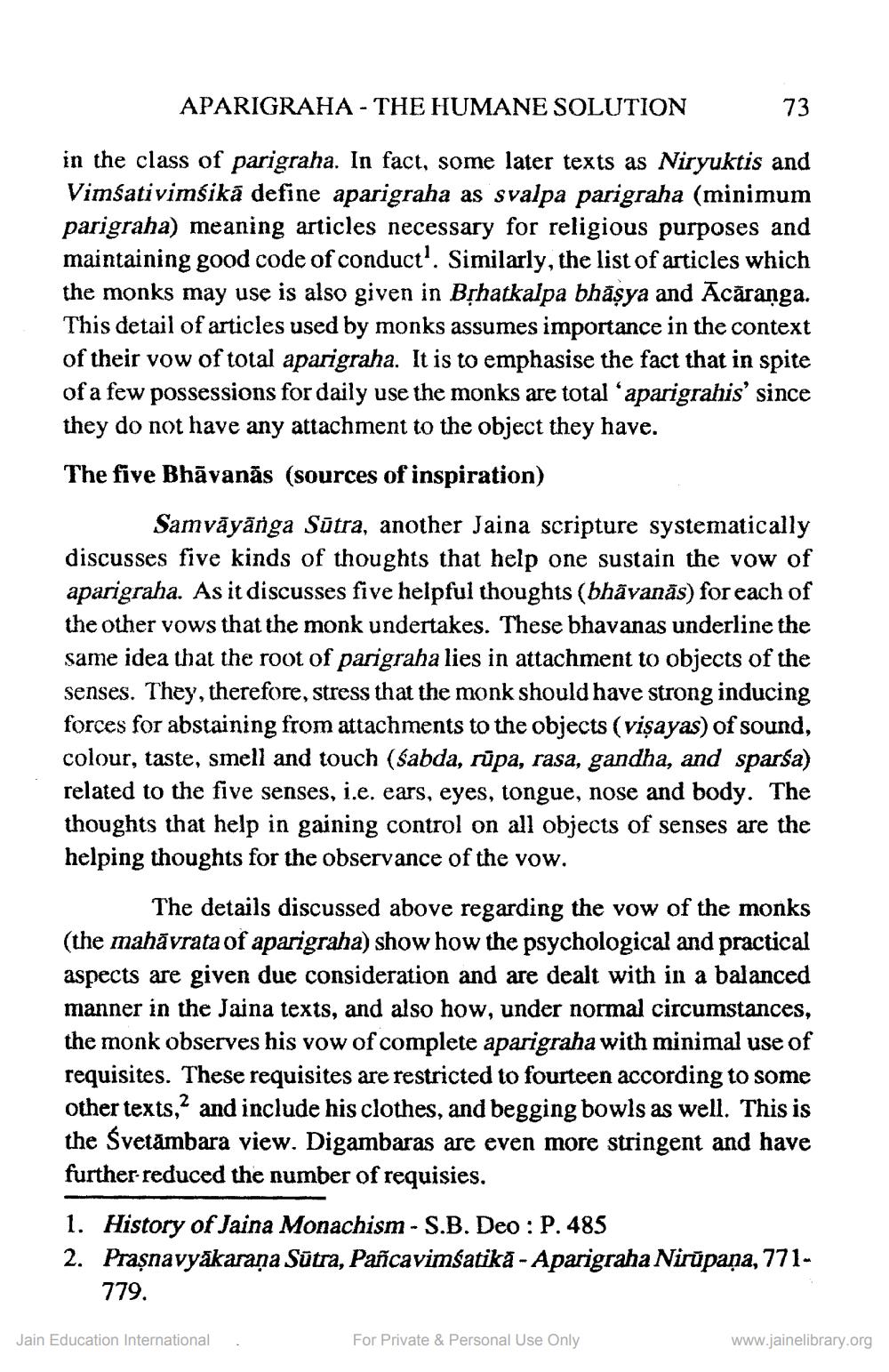________________
APARIGRAHA - THE HUMANE SOLUTION
73
in the class of parigraha. In fact, some later texts as Niryuktis and Vimšativimśikā define aparigraha as svalpa parigraha (minimum parigraha) meaning articles necessary for religious purposes and maintaining good code of conduct'. Similarly, the list of articles which the monks may use is also given in Bșhatkalpa bhāsya and Acāranga. This detail of articles used by monks assumes importance in the context of their vow of total aparigraha. It is to emphasise the fact that in spite of a few possessions for daily use the monks are total'aparigrahis' since they do not have any attachment to the object they have. The five Bhāvanās (sources of inspiration)
Samvāyānga Sūtra, another Jaina scripture systematically discusses five kinds of thoughts that help one sustain the vow of aparigraha. As it discusses five helpful thoughts (bhāvanās) for each of the other vows that the monk undertakes. These bhavanas underline the same idea that the root of parigraha lies in attachment to objects of the senses. They, therefore, stress that the monk should have strong inducing forces for abstaining from attachments to the objects (visayas) of sound, colour, taste, smell and touch (Sabda, rūpa, rasa, gandha, and sparsa) related to the five senses, i.e. ears, eyes, tongue, nose and body. The thoughts that help in gaining control on all objects of senses are the helping thoughts for the observance of the vow.
The details discussed above regarding the vow of the monks (the mahāvrata of aparigraha) show how the psychological and practical aspects are given due consideration and are dealt with in a balanced manner in the Jaina texts, and also how, under normal circumstances, the monk observes his vow of complete aparigraha with minimal use of requisites. These requisites are restricted to fourteen according to some Other texts,? and include his clothes, and begging bowls as well. This is the Svetambara view. Digambaras are even more stringent and have further reduced the number of requisies. 1. History of Jaina Monachism - S.B. Deo : P.485 2. Praşnavyākarana Sūtra, Pañcavimśatika - Aparigraha Nirūpaņa, 771
779.
Jain Education International
.
For Private & Personal Use Only
www.jainelibrary.org




